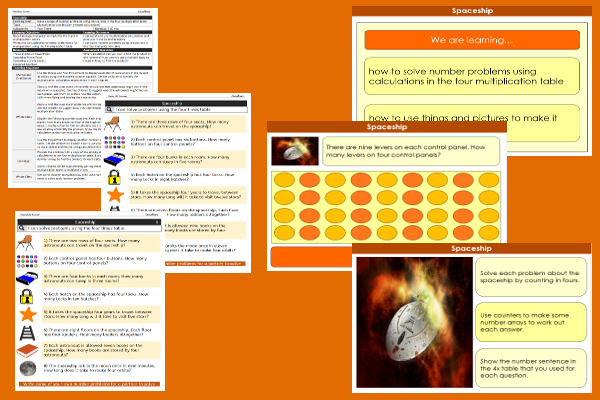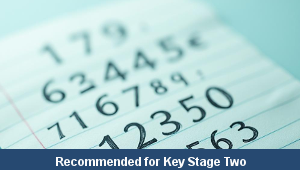Lesson Five – Spaceship

This maths teaching pack for Key Stage Two gets the children to practise solving a range of number problems using calculations in the four multiplication table to find the numbers of things that might be carried or used on a spaceship.
The class can explain and illustrate how to use concrete equipment and pictorial diagrams to model how to multiply some different numbers by four when solving each problem.
Download this teaching pack including a lesson plan, classroom activities and an interactive presentation to practise solving a range of number problems using calculations in the four multiplication table to find the numbers of things that might be carried or used on a spaceship
Activities in this teaching pack include differentiated worksheets to record how to solve number problems using calculations in the four multiplication table to find the products matching the numbers of things that can be carried and used on a spaceship.
The interactive presentation gets the children to explore how to solve a range of number problems using calculations in the four multiplication table.
This lesson is part of a maths scheme of work to get the children to learn and recall the number facts in the three and four times tables to utilise when solving abstract and contextual problems involving multiplication and division calculations. There are teaching activities for shared learning, differentiated worksheets to support independent learning and interactive presentations to introduce concepts and key skills.
-

Maths Arithmetic Assessment
Assess abilities in solving arithmetic number problems for addition, subtraction, multiplication and division when working with informal and formal written calculations
-

Environment
Identify and describe some of the special landscapes and locations that can be found in the world and reflect on how they can be protected and preserved for the future
-

Silent Letter Words
Explore and illustrate the meanings and spellings of some different words with silent letters when using them in a range of topics and scenarios
-

Complaint Letters
Explain and model how to format and structure writing when composing letters of complaint about different issues and scenarios
